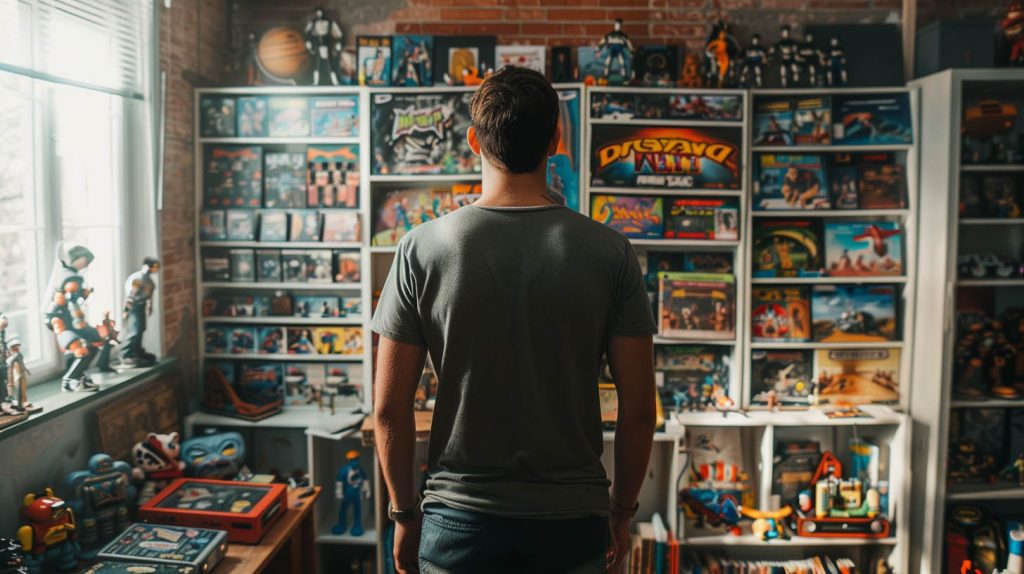When you buy through our links, we may earn a commission. Learn more.
Overview of Vintage Toy Fairs
Vintage toy fairs play a significant role in the toy collecting community. They offer unique opportunities for collectors to discover, buy, and sell rare items while connecting with fellow enthusiasts. Our exploration of these events highlights their historical importance, the variety of collectables available, and how these fairs are organized.
Historical Significance
The history of vintage toy fairs dates back to the early 20th century when collectors began to gather for trading and sharing knowledge. The first official toy fair was held in New York in 1903, marking the birth of significant annual events for toy collectors. These fairs allowed for the exchange of ideas and trends.
Notably, events like the Vintage & Modern Toy Fair began to thrive as they brought together independent sellers and collectors. Over the decades, vintage fairs have shaped the toy industry by preserving nostalgia and maintaining a rich history of toys from various eras. We see them as community-building experiences that celebrate both the toys and the stories they carry.
Types of Collectables
At vintage toy fairs, we can find a wide array of collectables. Common items include:
- Action Figures: From classic superheroes to modern designs.
- Dolls: Vintage dolls, especially rare brands, attract many collectors.
- Board Games: Nostalgic games from the 60s, 70s, and 80s are in high demand.
- Model Kits: Classic car and airplane kits often draw interest.
These items not only represent different time periods but also showcase innovations in design and manufacturing. Collectors appreciate the craftsmanship and history behind each piece, making the hunt for these toys exciting. Many fairs also feature themed sections, highlighting specific styles or decades.
Event Organization
The organization of vintage toy fairs can vary widely. Large events, such as the British Toy Fair, typically feature hundreds of dealers. This creates a bustling atmosphere with thousands of items on display. Smaller fairs may focus on specific themes, attracting niche collectors.
Key aspects of organizing these fairs include:
- Venue Selection: Comfortable spaces that can accommodate large crowds and displays.
- Dealer Recruitment: Bringing together both independent sellers and established brands.
- Marketing: Promoting the event through social media and collector networks to attract attendees.
Event planning focuses on creating an engaging experience. We value events that include not just buying opportunities, but also workshops and discussions that educate and inspire collectors.
Planning Your Visit
When attending a vintage toy fair, careful planning can enhance our experience significantly. We should consider how to get there, understand ticket information, and be aware of the facilities and amenities at the venue.
Getting There
Reaching the fair is key to our experience. Many venues are easily accessible from major roads like the M25, which connects us to various regions around London.
- Public Transport: Consider using trains or buses, which often drop us close to the venue.
- Car: If we choose to drive, check the venue’s parking policy. Some fairs offer free parking, while others may charge a fee.
- ULEZ Considerations: If we drive into central London, be aware of the Ultra Low Emission Zone (ULEZ) charges. Research if our vehicle complies with the regulations.
Planning our journey ahead can save time and reduce stress.
Ticket Information
Admission to toy fairs typically requires a ticket, and we should be aware of prices and purchasing options.
- Types of Tickets: There may be options for general admission and early entry. Early entry allows us to access the fair before the general crowd, giving us a better chance to find rare items.
- Buying Tickets: Tickets are often available online, which helps us avoid long lines on the day of the event.
- Sellers and Buyers: If we’re looking to sell, we may need a vendor ticket, which allows us to set up a booth.
It’s essential to check specific fair websites for latest ticket details and prices.
Facilities and Amenities
Understanding available facilities enhances our visit.
- Food and Drink: Most venues offer food stalls or cafes for refreshments.
- Rest Areas: Look for seating areas where we can take a break between browsing.
- Cash Facilities: Some sellers prefer cash, so it’s wise to bring some. Also, check if the venue has ATMs for convenience.
Planning around these details ensures we have a comfortable and enjoyable experience at the fair.
I’m Cartez Augustus, a content creator based in Houston, Texas. I’ve been exploring a variety of niches in content marketing in order to increase website traffic. I enjoy experimenting with artificial intelligence, search engine optimization, and paid search. The process of creating nerd-related content has been extremely rewarding since it has enabled me to network with people who are knowledgeable about these subjects.

